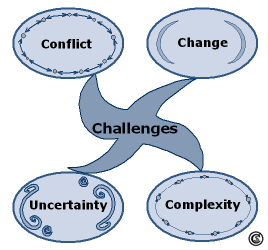Introduction to Planning Activity : Get organized by planning activities
In the fast-paced tapestry of modern life, the art of strategic activity planning emerges as a beacon illuminating the path to enhanced productivity, efficient time management, and a harmonious balance between personal and professional spheres.
The Importance of Strategic Activity Planning
In the dynamic landscape of today’s world, where time is a precious commodity, strategic activity planning stands as the cornerstone of organizational prowess. It transcends mere scheduling, diving deep into the realms of structured organization. At its core, strategic planning is the compass guiding individuals through the maze of tasks, ensuring that every action aligns with overarching goals.
- Unveiling the Essence of Organization
Organization, the linchpin of strategic planning, empowers individuals to navigate the complexities of daily life with precision. From managing professional commitments to juggling personal responsibilities, the ability to organize tasks creates a streamlined framework for optimal efficiency.
- Nurturing Productivity as a Byproduct
As a symbiotic companion to organization, productivity blossoms. Strategic activity planning instills a sense of purpose in every task, transforming mundane activities into meaningful steps toward broader objectives. The ripple effect of heightened productivity extends beyond immediate tasks, fostering a sense of accomplishment and momentum.
- Mastering the Symphony of Time Management
In the orchestra of life, time is the conductor, and strategic planning is the score. Delving into the intricacies of time management, strategic planners learn to allocate their most valuable resource with precision. From prioritizing critical tasks to allocating time for personal pursuits, the mastery of time management becomes a hallmark of those versed in strategic activity planning.
Impact on Personal and Professional Life
Beyond the confines of professional settings, strategic activity planning casts its transformative spell on the delicate balance between personal and professional realms. The intersection of these spheres becomes a canvas where efficiency, equilibrium, and stress reduction converge.
- Achieving the Coveted Work-Life Balance
The elusive work-life balance becomes an attainable reality through strategic activity planning. By delineating boundaries and prioritizing tasks, individuals carve out dedicated moments for personal rejuvenation. The result is a harmonious coexistence where professional aspirations coalesce seamlessly with personal joys.
- Unleashing Efficiency as a Catalyst
Efficiency, the driving force behind strategic planning, becomes the catalyst for achieving more with less. In the professional arena, strategic planners optimize workflows, ensuring that tasks are executed with precision and purpose. In personal life, efficiency translates into moments of leisure and relaxation, free from the encumbrance of impending tasks.
- Alleviating Stress: The Silent Achievement
Stress, a ubiquitous companion in the modern landscape, bows to the strategic planner’s prowess. By anticipating challenges, breaking down tasks into manageable segments, and incorporating moments of respite, strategic planning becomes a shield against the onslaught of stress. The result is a life characterized by resilience, tranquility, and a measured response to the ebb and flow of responsibilities.
In this intricate dance of strategy, organization, and efficiency, the introduction to strategic activity planning sets the stage for a transformative journey. It beckons individuals to embrace the art of planning not merely as a taskmaster but as a guiding force toward a life marked by purpose, fulfillment, and a seamless blend of personal and professional excellence.

Benefits of Planned Activities
In today’s fast-paced world, where demands on our time seem endless, the practice of strategic activity planning emerges as a beacon of efficiency and well-being. By meticulously organizing our tasks and allocating our time wisely, we unlock a multitude of benefits that enhance both our personal and professional lives.
Increased Productivity and Efficiency
In the bustling landscape of daily responsibilities, effective task management reigns supreme. Through strategic planning, individuals gain the ability to prioritize their tasks based on importance and urgency. By delineating tasks and assigning appropriate priorities, individuals can navigate their workload with precision and purpose. This not only ensures that critical tasks are addressed promptly but also minimizes the risk of overlooking important deadlines. Moreover, a well-structured workflow facilitates smoother transitions between tasks, minimizing disruptions and maximizing productivity.
Effective Time Utilization
Time, the most precious resource, is a finite commodity that must be managed judiciously. Time blocking, a technique employed in activity planning, empowers individuals to allocate specific time slots to different activities or tasks. By segmenting their day into dedicated blocks of time, individuals optimize their productivity and eliminate the inefficiencies associated with multitasking. This focused approach to time management ensures that each task receives the attention it deserves, leading to heightened concentration, improved task completion rates, and a greater sense of accomplishment.
Stress Reduction and Improved Well-being
In the relentless pursuit of productivity, individuals often find themselves grappling with stress and burnout. However, by embracing strategic activity planning, individuals can effectively manage their workload and mitigate the detrimental effects of stress on their mental and physical well-being. Through meticulous planning and prioritization, individuals gain a sense of control over their tasks, reducing feelings of overwhelm and anxiety. Additionally, by carving out dedicated time for relaxation and self-care, individuals cultivate a healthier work-life balance, fostering greater overall well-being and harmony in their lives.
In essence, the benefits of planned activities extend far beyond mere task completion. They empower individuals to reclaim control of their time, enhance their productivity and efficiency, and safeguard their mental and physical well-being. By embracing the principles of strategic activity planning, individuals can navigate life’s complexities with confidence, purpose, and resilience.
Tools and Techniques for Activity Planning

In the era of digital innovation, the landscape of activity planning has been enriched with a myriad of tools and techniques, transforming the way individuals organize and manage their tasks. The integration of technology has ushered in an era of unprecedented efficiency, allowing individuals to harness the power of digital tools to optimize their planning processes.
Utilizing Digital Tools
The advent of productivity apps, task management software, and digital planners has revolutionized the way individuals approach activity planning. These tools serve as digital companions, offering features that streamline organization, enhance productivity, and provide a centralized platform for managing tasks.
- Productivity Apps: These apps act as dynamic assistants, offering functionalities that range from task list creation and project tracking to reminders and collaborative features. Popular apps like Trello, Todoist, and Asana empower individuals to create, organize, and monitor their tasks in real-time, fostering a collaborative approach to activity planning.
- Task Management Software: Tailored for more complex organizational needs, task management software like Jira and Monday.com provides robust solutions for teams and businesses. These platforms facilitate task assignment, progress tracking, and seamless communication, ensuring that projects are executed with precision and efficiency.
- Digital Planners: The evolution of traditional planners into digital formats caters to those who find comfort in a blend of tactile and digital planning. Apps like GoodNotes and Notion offer the flexibility to create digital notebooks, plan events, and set reminders, combining the tangible feel of traditional planning with the advantages of digital organization.
Time Blocking Strategies
Time, when harnessed strategically, becomes a powerful ally in the realm of activity planning. Time blocking, a technique embraced by many successful individuals, involves allocating specific blocks of time to different activities. This deliberate approach enhances focus, minimizes multitasking, and optimizes overall time utilization.
- Time Blocking Techniques: Time blocking techniques vary based on individual preferences and work styles. The Pomodoro Technique, for instance, involves breaking the day into focused intervals, usually 25 minutes in duration, separated by short breaks. This method promotes sustained focus and combats mental fatigue.
- Time Management Strategies: Effective time management goes hand in hand with successful activity planning. Techniques such as the Eisenhower Matrix, which categorizes tasks based on urgency and importance, assist individuals in prioritizing their activities. By allocating time to high-priority tasks, individuals ensure that critical objectives are met efficiently.
- Time Allocation: The process of time allocation involves assigning specific time slots to predefined tasks. This method brings structure to the day, enabling individuals to dedicate concentrated effort to each activity. Digital tools like Google Calendar or Microsoft Outlook offer features that facilitate easy time allocation and scheduling.
Prioritization Methods
Prioritizing tasks is a cornerstone of effective activity planning. It involves determining the relative importance of each task and organizing them in a sequence that aligns with overarching goals and deadlines.
- Urgency vs. Importance: The Eisenhower Matrix, a prioritization framework, categorizes tasks into four quadrants based on their urgency and importance. This method aids in distinguishing between tasks that require immediate attention and those that contribute to long-term goals.
- ABCD Prioritization: Assigning priorities using the ABCD method involves categorizing tasks into different priority levels. ‘A’ tasks are high priority, ‘B’ tasks are moderately important, and ‘C’ tasks are lower in priority. This method aids in tackling critical tasks first while maintaining a balanced approach.
- Value-based Prioritization: This method involves assessing the value or impact of each task on overall objectives. Tasks that contribute significantly to strategic goals are prioritized over those with lesser impact. It ensures that efforts are directed toward activities that align with broader aspirations.
In embracing these digital tools, time-blocking strategies, and prioritization methods, individuals can elevate their activity planning endeavors to new heights. These techniques offer a dynamic and adaptable approach to managing tasks, fostering efficiency, collaboration, and a harmonious balance between personal and professional commitments.
Personalized Activity Planning Strategies

The journey to effective activity planning transcends one-size-fits-all approaches, acknowledging the uniqueness of individuals and the varied landscapes of their goals. Personalized activity planning strategies empower individuals to tailor their plans to align seamlessly with their aspirations, fostering a dynamic and customized approach to productivity.
Tailoring Plans to Individual Goals
- Personal Development as a Guiding Light:
Activity planning takes on a profound meaning when it becomes intricately woven into one’s personal development journey. Tailoring plans to individual goals involves a deliberate and thoughtful approach to align tasks with overarching aspirations. Whether the aim is to acquire new skills, nurture talents, or embark on a transformative journey, personalized planning becomes a compass guiding individuals toward their desired destinations.
- Goal Setting as a Catalyst:
Central to tailoring plans is the art of goal setting. Clear, measurable, and realistic goals serve as the foundation upon which personalized activity plans are built. Whether these goals pertain to professional achievements, academic pursuits, or personal growth milestones, they act as beacons, illuminating the path forward. The synergy between goal setting and activity planning amplifies motivation and propels individuals towards tangible success.
- Customization for Maximum Impact:
No two individuals share identical paths or aspirations. Recognizing this diversity, personalized activity planning encourages customization at its core. Customizing plans involves adapting strategies, timelines, and approaches to suit individual preferences and working styles. Whether through the utilization of specific tools, the incorporation of preferred work environments, or the alignment of tasks with peak energy periods, customization maximizes impact and fosters a sense of ownership over one’s journey.
Incorporating Flexibility in Plans
- Adaptability as a Virtue:
Life is inherently dynamic, filled with unexpected twists and turns. Recognizing this, incorporating flexibility into activity plans becomes a virtue. While strategic planning is essential, the ability to adapt and pivot in response to changing circumstances ensures resilience and mitigates the impact of unforeseen challenges. Flexibility allows individuals to embrace opportunities, navigate setbacks, and maintain a sense of control in the face of uncertainty.
- Dynamic Planning for Ever-Changing Realities:
Dynamic planning transcends rigid structures, embracing the fluidity of real-life scenarios. It involves creating plans that can evolve in response to emerging priorities, shifting timelines, or changing personal circumstances. Dynamic planning acknowledges that the journey towards goals is not always linear and encourages individuals to iterate and recalibrate their plans as needed, fostering a continuous and adaptive approach to achievement.
Balancing Short-Term and Long-Term Goals
- Striking the Optimal Balance:
Effective activity planning involves the delicate art of balancing short-term wins with long-term aspirations. Balancing these temporal dimensions requires a strategic mindset that allocates attention to immediate tasks while keeping the broader picture in focus. Striking the optimal balance ensures that individuals experience a sense of accomplishment in the present while progressing steadily towards overarching, future-oriented objectives.
- Navigating the Micro and Macro Perspectives:
Balancing short-term and long-term goals necessitates the ability to seamlessly navigate between micro and macro perspectives. Micro-level planning involves breaking down larger goals into actionable steps, making them more manageable and achievable in the short term. Simultaneously, macro-level planning keeps individuals connected to the broader vision, ensuring that short-term activities contribute meaningfully to the realization of long-term aspirations.
- The Symbiosis of Progress:
In the realm of personalized activity planning, short-term and long-term goals coexist symbiotically. Short-term achievements fuel motivation, instilling a sense of progress and momentum. Simultaneously, a focus on long-term goals provides purpose and direction, anchoring daily activities in the broader context of a fulfilling journey. The harmonious interplay between these temporal dimensions enriches the planning process, creating a roadmap that is both fulfilling in the present and transformative for the future.
In weaving the fabric of personalized activity planning, individuals embark on a transformative journey that transcends the traditional boundaries of productivity. By tailoring plans to individual goals, incorporating flexibility, and striking a harmonious balance between short-term and long-term aspirations, personalized activity planning becomes a dynamic and empowering process. It is not merely a set of tasks to be completed but a bespoke roadmap leading to the realization of individual dreams and aspirations.
Activity Planning for Professional Success

In the realm of professional success, the art of activity planning takes on heightened significance, serving as a linchpin for career development, collaborative endeavors, and effective navigation of deadlines and milestones. Strategic and intentional planning becomes not just a personal practice but a catalyst for achieving milestones and advancing in one’s professional journey.
Aligning Plans with Career Objectives
- Career Development as a Guiding Principle:
For individuals seeking to ascend the ladder of professional success, aligning activity plans with career objectives is paramount. This involves a meticulous examination of individual career goals, aspirations, and skill development needs. By integrating tasks and activities that directly contribute to career advancement, professionals ensure that their daily efforts propel them towards their desired professional destination.
- Professional Growth through Strategic Planning:
Strategic planning is the cornerstone of professional growth. It involves identifying key competencies, acquiring new skills, and setting milestones that align with broader career objectives. Whether through continuous learning, networking initiatives, or targeted projects, professionals strategically plan their activities to bolster their expertise and remain agile in the ever-evolving professional landscape.
Collaborative Planning in a Team Environment
- Team Collaboration as a Productivity Amplifier:
In team environments, the success of collaborative planning hinges on effective communication and shared objectives. Individuals within a team align their activity plans to contribute synergistically towards common goals. Collaborative planning fosters an environment where each team member’s strengths are leveraged, ensuring a holistic approach to project execution.
- Project Planning for Group Productivity:
Project planning within a team context involves breaking down overarching goals into specific tasks, assigning responsibilities, and establishing timelines. Team members synchronize their activity plans to ensure seamless coordination, fostering an environment where individual efforts dovetail into collective success. The result is enhanced productivity, streamlined workflows, and the achievement of shared objectives.
Navigating Deadlines and Milestones
- Deadline Navigation as a Strategic Skill:
In the professional arena, navigating deadlines is an art that requires strategic planning and time management. Professionals adept at activity planning understand the importance of setting realistic deadlines, prioritizing tasks, and maintaining a proactive approach to meet time-sensitive deliverables. By honing this skill, individuals position themselves as reliable and efficient contributors in the workplace.
- Strategic Approach to Milestones:
Milestones serve as markers of progress on the journey to professional success. Activity planning involves strategically setting and working towards these milestones. Whether completing a project phase, achieving sales targets, or attaining certifications, professionals use milestones as motivational markers that propel them forward in their careers. Each planned activity becomes a stepping stone towards these significant achievements.
- Holistic Milestone Navigation:
Effective professionals approach milestone navigation holistically, considering not only professional achievements but also personal development milestones. Balancing the attainment of work-related goals with personal growth objectives creates a well-rounded professional who excels not only in the workplace but in all facets of life.
In the professional landscape, activity planning becomes a dynamic force propelling individuals towards career success. By aligning plans with career objectives, fostering collaborative planning in team environments, and strategically navigating deadlines and milestones, professionals create a roadmap that not only accelerates their ascent in the professional realm but also ensures a fulfilling and purpose-driven journey.
Overcoming Challenges in Activity Planning

Effectively navigating the terrain of activity planning is not without its challenges. The journey to enhanced productivity and goal attainment is often peppered with obstacles that require strategic approaches and resilience. Here, we delve into key challenges individuals encounter in their activity planning endeavors and explore practical strategies to overcome them.
Addressing Procrastination
- Procrastination Strategies:
Procrastination, the perennial foe of productivity, can derail even the most meticulously crafted plans. Combatting procrastination involves adopting effective strategies that disrupt the cycle of delay and boost motivation.
- Time Blocking for Focus: Allocate specific time blocks for tasks prone to procrastination. This focused approach helps break down intimidating tasks into manageable segments, making them more approachable.
- Setting Micro-Goals: Breaking larger tasks into smaller, achievable goals creates a sense of progress. Celebrating the completion of these micro-goals serves as a motivational boost, countering the allure of procrastination.
- Accountability Partnerships: Sharing plans and goals with an accountability partner fosters a sense of responsibility. Regular check-ins create a supportive environment where both individuals encourage each other to stay on track.
- Overcoming Procrastination:
Procrastination is often rooted in factors such as fear of failure, lack of motivation, or task complexity. By acknowledging these factors and implementing targeted strategies, individuals can dismantle the barriers to productivity.
Managing Unexpected Changes
- Adaptability as a Pillar:
Life is replete with unexpected changes, from sudden shifts in priorities to unforeseen external factors. Successful activity planning requires the cultivation of adaptability as a core trait.
- Crisis Planning: Anticipate potential disruptions by incorporating crisis planning into activity plans. Identifying backup strategies and alternative approaches ensures a smoother response when unexpected changes occur.
- Flexible Planning Structures: Build flexibility into planning structures. This entails creating plans that can accommodate adjustments without compromising overall objectives. Agile planning methods, commonly used in project management, exemplify this adaptable approach.
- Change Management Strategies:
Navigating unexpected changes requires effective change management strategies. This involves acknowledging the change, evaluating its impact, and swiftly adjusting plans to align with the new circumstances.
Building Consistency in Planning Habits
- Routines for Sustainable Planning:
Consistency in planning habits forms the bedrock of successful activity planning. Building and maintaining planning routines ensures that individuals proactively engage with their goals on a regular basis.
- Morning or Evening Planning Rituals: Designate specific times during the day, such as mornings or evenings, for planning rituals. These dedicated moments create a structured routine, allowing individuals to set intentions for the day or reflect on achievements.
- Weekly Reviews: Conduct weekly reviews to assess progress, recalibrate goals, and set new priorities. This reflective practice contributes to continuous improvement and strengthens the consistency of planning habits.
- Digital Reminders and Tools: Leverage digital tools and reminders to prompt planning activities. Calendar notifications, task management apps, and habit-tracking tools serve as electronic nudges, fostering consistent engagement with planning habits.
- Habit Formation Techniques:
Consistency is closely tied to habit formation. Employing techniques such as the “Two-Minute Rule” or habit stacking can assist in establishing planning as a regular and ingrained part of daily routines.
In overcoming challenges associated with procrastination, unexpected changes, and building consistency, individuals fortify their activity planning endeavors. By adopting targeted strategies and cultivating key traits, individuals not only surmount obstacles but also enhance their resilience and adaptability in the face of evolving circumstances. The ability to address challenges head-on contributes to the transformative nature of activity planning, elevating it from a mere task to a dynamic and empowering lifestyle.
Measuring Success in Activity Planning
Quantifiable Metrics for Progress
- Success Metrics:
Establish quantifiable metrics to gauge progress and success. Whether it’s the completion of tasks, adherence to timelines, or the achievement of milestones, having measurable indicators provides clarity on the effectiveness of activity planning.
Reflection and Continuous Improvement
- Reflection for Growth:
Incorporate regular reflection sessions to evaluate the efficacy of planning strategies. Identifying areas for improvement and celebrating successes contribute to continuous growth and refinement of planning approaches.
Celebrating Milestones and Achievements
- Milestone Acknowledgment:
Celebrate milestones and achievements along the journey. Recognizing progress, no matter how small, fosters motivation and reinforces the positive impact of effective activity planning.
Conclusion
In the intricate tapestry of modern existence, where demands compete for attention and time unfolds as a precious commodity, the art of strategic activity planning emerges as a beacon of empowerment. Through the meticulous orchestration of goals, tasks, and aspirations, individuals navigate the complexities of life with a deliberate and purposeful stride.
Strategic activity planning transcends the confines of a mere organizational tool; it becomes a transformative force that propels individuals towards personal and professional mastery. From the nimble adaptation to unexpected changes to the intentional cultivation of consistency and resilience, the journey is marked by milestones, celebrated achievements, and a commitment to continuous improvement.
As we embrace the philosophy of mastering life through strategic activity planning, we unlock the gates to a realm where productivity becomes synonymous with fulfillment, and each day becomes a canvas upon which we paint the strokes of our aspirations. The strategic conductor of our own destiny, we find that the harmonious blend of planning, adaptability, and reflection orchestrates a symphony where success is not merely a destination but an ongoing melody in the journey of life.









